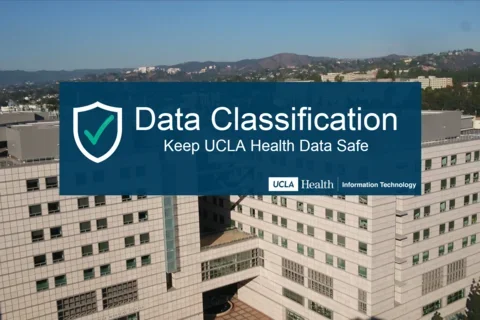Think before you share: Keep your data secure
UC-CAM

Data is one of our most valuable assets, both personal and professional. As a health organization with access to sensitive information such as patient records, research data, and other confidential materials, it is imperative that we protect it.
To ensure data remains safe, it’s important to understand how we classify, manage, and protect the information we handle every day. Here are a few reminders and best practices:
Know how to classify your data
Identify whether your data is public, internal, sensitive, or restricted and be mindful of where you store or share that data.
Watch the UCLA Health: Data Classification video to get an overview on what the classifications are and how to protect each data level.
Think before you share
Double check where and with whom you’re sharing files, especially clinical or research data. Keep in mind that not all data needs to be shared and share only what the minimum necessary is to accomplish your task.
Below are a few of the commonly used secure tools:
- Box as it is HIPAA/FERPA-compliant
- #secure in the subject line of an email containing sensitive information
Note: Patient data will require more considerations for sharing, make sure to check with your leadership for proper sharing protocols.
Keep home and work data separate
To avoid the accidental sharing of any UCLA Health data, always store personal and work files in separate storage platforms—and refrain from using your Mednet email for personal tasks.